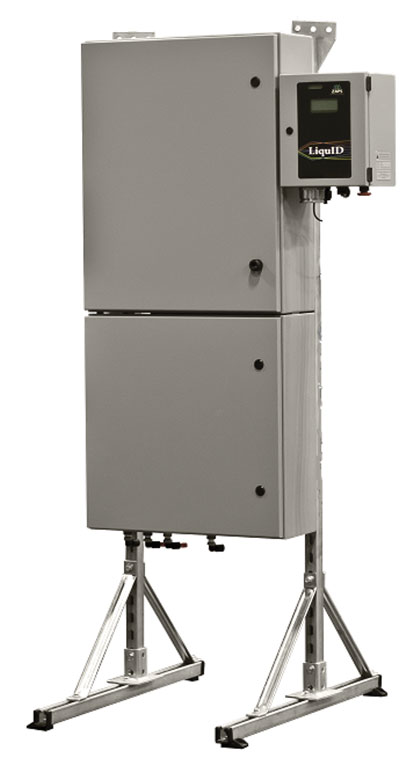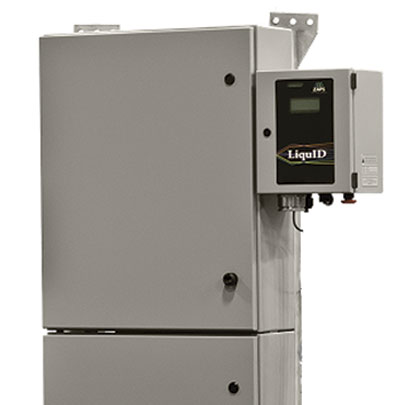Emergent water treatment technologies continue to revolutionize the way we view our world and the ways in which our municipalities address their most pressing environmental and efficiency concerns.
One small town in Oregon has taken a creative and innovative approach to ensure optimal performance at its water treatment facility by using leading-edge real-time water monitoring technology, a vigilant mindset, and an eye to the future.
SHEPHERDS OF THE WATERS
With an average flow of 0.1 million gallons per day the wastewater treatment plant serving city of Riddle, Oregon, may not be the largest in the nation, but for Public Works Director Eric Quinn its safe and efficient operation is of the highest priority. Since his arrival at the plant in 1988, Quinn has worked diligently to keep the facility and its staff up to date with the most current information and technological tools. He’s proud of the work they’re doing and eager to do it better.
“Operators must possess the moral fiber to do the very best they can in this current atmosphere of environmental sensitivity. It is our duty as one of the shepherds of the waters of the state, to use all the tools to the best of our abilities no matter what we are presented with. That is our challenge,” says Quinn.
It is this philosophy and commitment that has driven the City of Riddle to consistently improve its wastewater treatment facility to perform evermore effectively and efficiently with major upgrades in 1995, 1999, 2006, and 2010.

PLANNING AND DESIGN
In Riddle’s most recent overhaul, wintertime overflows, aging equipment, TMDLs and compliance schedules all contributed to the planning and design efforts undertaken by the design team and the City. Ultimately, the City brokered a 67 percent grant-funded project that included Federal STAG funds, a Community Development Block Grant, USDA/Rural Development loan/grant funds and State Revolving Funds from the Oregon Department of Environmental Quality. The funds were used for increased plant capacity, enhanced biological nutrient removal capabilities and the addition of UV disinfection equipment.
Early in the planning stages Eric started investigating emergent real-time water monitoring technologies and got excited about the prospect of being able to target specific aspects in his plant’s process. “Wastewater treatment is very dynamic. Being able to visualize even small adjustments and what their impact on plant performance does gives the operators a level of understanding that easily could have gone unnoticed in the past.”
ENTER ZAPS TECHNOLOGIES
Quinn had learned about the application of one real-time water monitoring system just up the road in Corvallis, Oregon where, in 2012, the city’s wastewater treatment plant had just installed three LiquID stations manufactured by ZAPS Technologies. “I was aware early on about the ZAPS Technologies testing in the Corvallis Wastewater Plant through one of the consultants working on the project. His enthusiasm was infectious, and I was hoping for the opportunity to be able to utilize the technology for myself.”
ZAPS Technologies is a Corvallis, Oregon based company that provides high-precision optical instrumentation and services for real-time water quality monitoring and analysis. The company’s flagship product, the LiquID station, provides reagent-free, multi-parameter detection capability, and is rugged enough for exposed field installations.
To make these measurements, the LiquID station uses Hybrid Multispectral Analysis (HMA); an optical approach developed at ZAPS Technologies specifically for online monitoring. HMA uses a combination of in situ fluorescence, absorption, and scattering measurements in a single flow-cell to continuously characterize chemical bonding and molecular structure.
GETTING THE BEST BY GOING GREEN
HMA is a unique combination of advanced optical, photonic, and statistical technologies applied to the challenge of providing synchronized high frequency data for complex water types. Such information is required to control and monitor treatment processes in real time. HMA is a ‘green’ technology in that it eliminates reagents and standards for sampling, eliminates sample preparation and storage, and requires only 72 watts to operate. The HMA methodology was developed through support in part by the US Environmental Protection Agency, Office of Naval Research (ONR), Oregon State University, and the Oregon Nanoscience and Microtechnologies Institute (ONAMI).
Eric explains, “I had my eye on this technology early in the design phase. Other manufacturers were beginning to develop multi-parameter technology, but none included E.coli. This was very intriguing to me and seemed to offer a very important process management tool. Nutrient removal was going to be the challenge with the new plant but my vision was using ZAPS to optimize performance across the board.”
Quinn approached ZAPS to present his case and to find out if their LiquID station might present a viable solution. After considering the challenges presented at the Riddle plant and Eric’s goal of fine tuning its process, ZAPS helped determine that his plant might best benefit from a LiquID station to monitor the plant’s effluent Ammonia, BOD, cBOD, E.coli, Nitrite+Nitrate and TSS.
A LOOK AHEAD
Eric’s challenge then became convincing his funding sources that this emergent technology merited the investment. In part 2 of this series, we’ll discuss the installation and set-up, as well as examine the results. ◆
For More Information:
The LiquID Station from ZAPS Technologies is an innovative, optical instrument for continuous water quality monitoring. The automated online instrument analyzes a continuous flow-through stream from a pressurized water sample line using hybrid multi-spectral analysis (HMA), and uses no reagents nor produces any waste other than the original sample (which is returned or wasted as appropriate). With this method, the LiquID station is capable of monitoring a wide range of water quality parameters in a number of different industry applications, including those relevant to municipal water and wastewater treatment, water reuse systems and industrial process control. For more information, visit www.zapstechnologies.com or stop by booth # 1363 at WEFTEC.
____________________________________________
MODERN PUMPING TODAY, September 2016
Did you enjoy this article?
Subscribe to the FREE Digital Edition of Modern Pumping Today Magazine!
![]()


